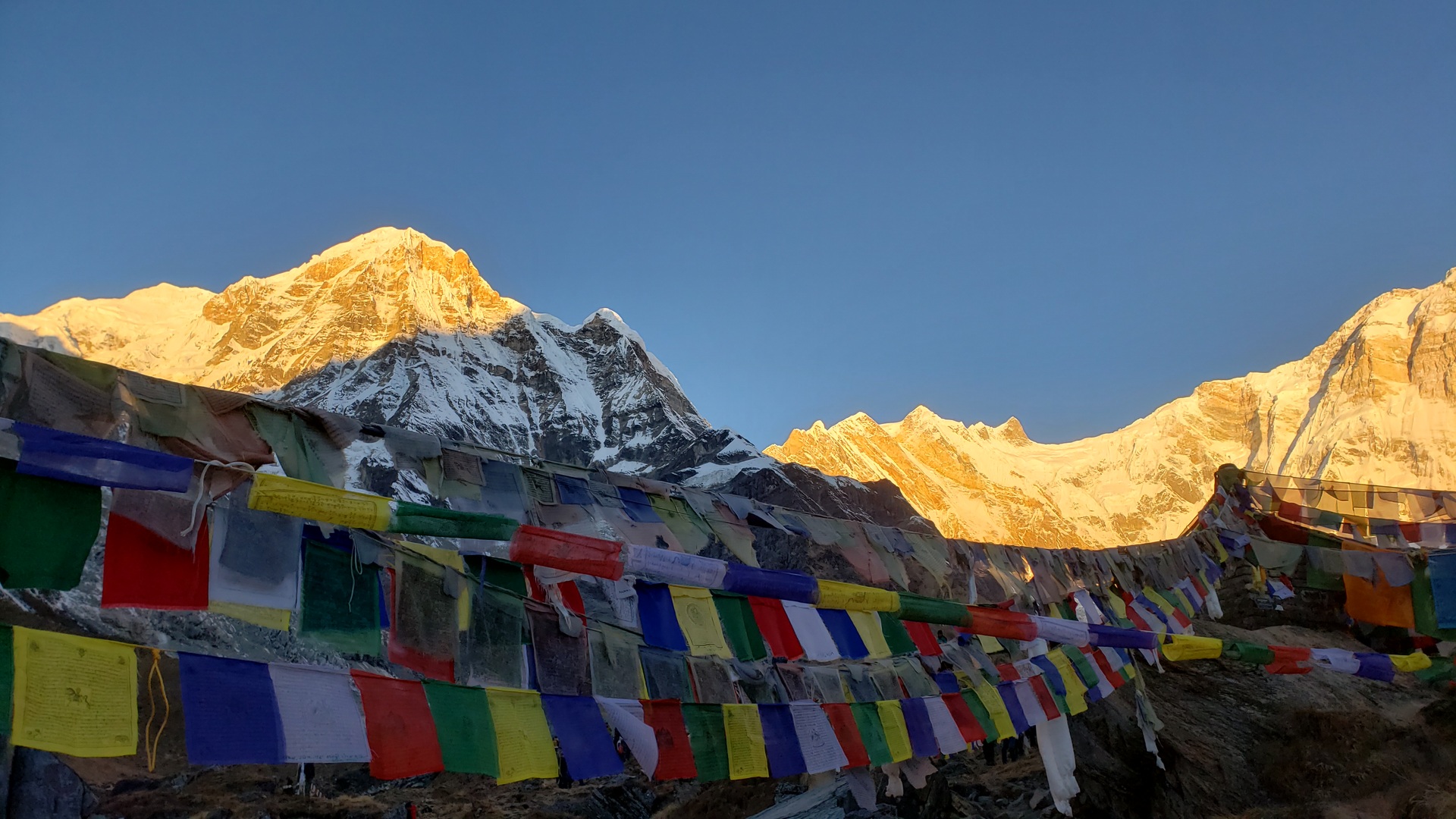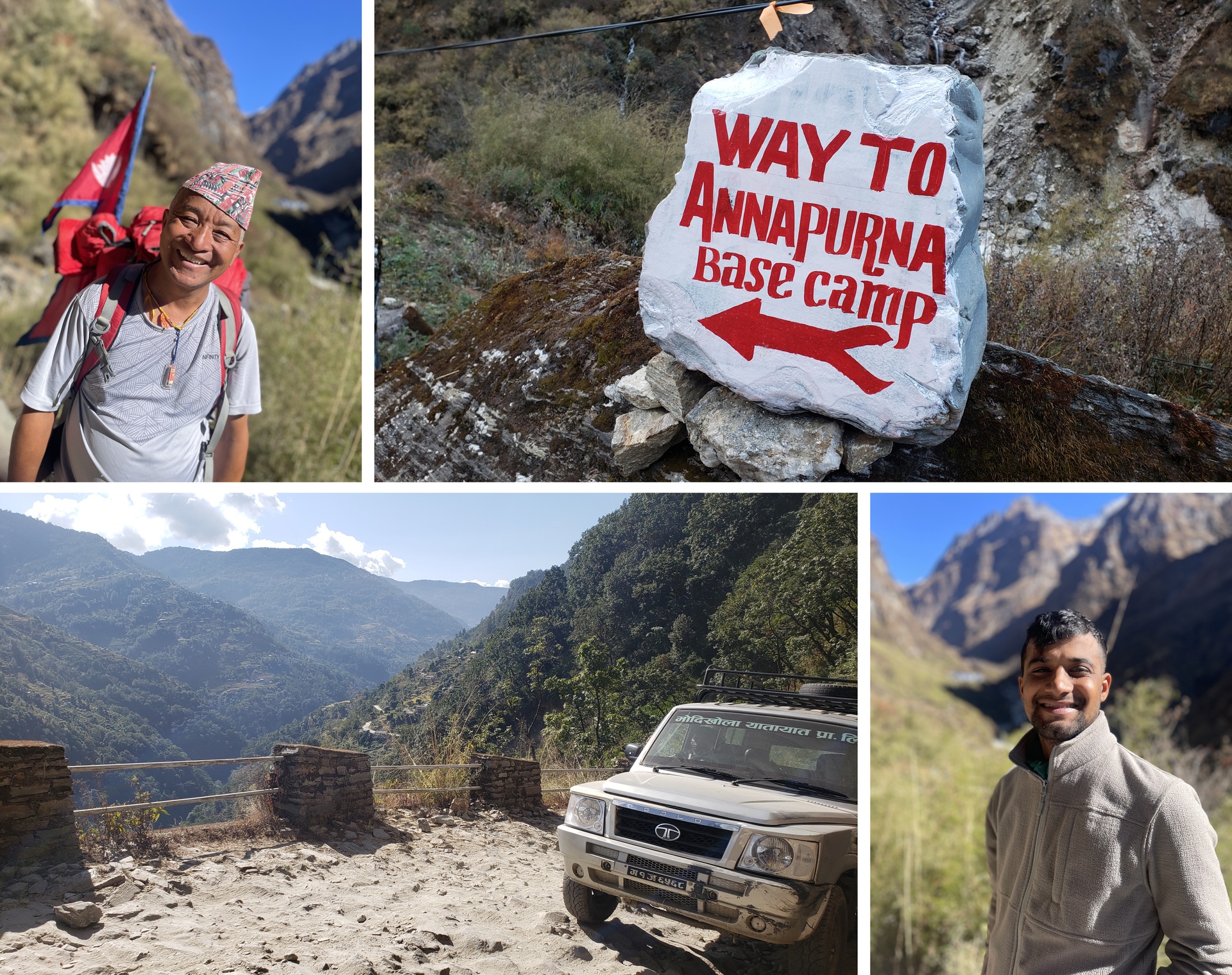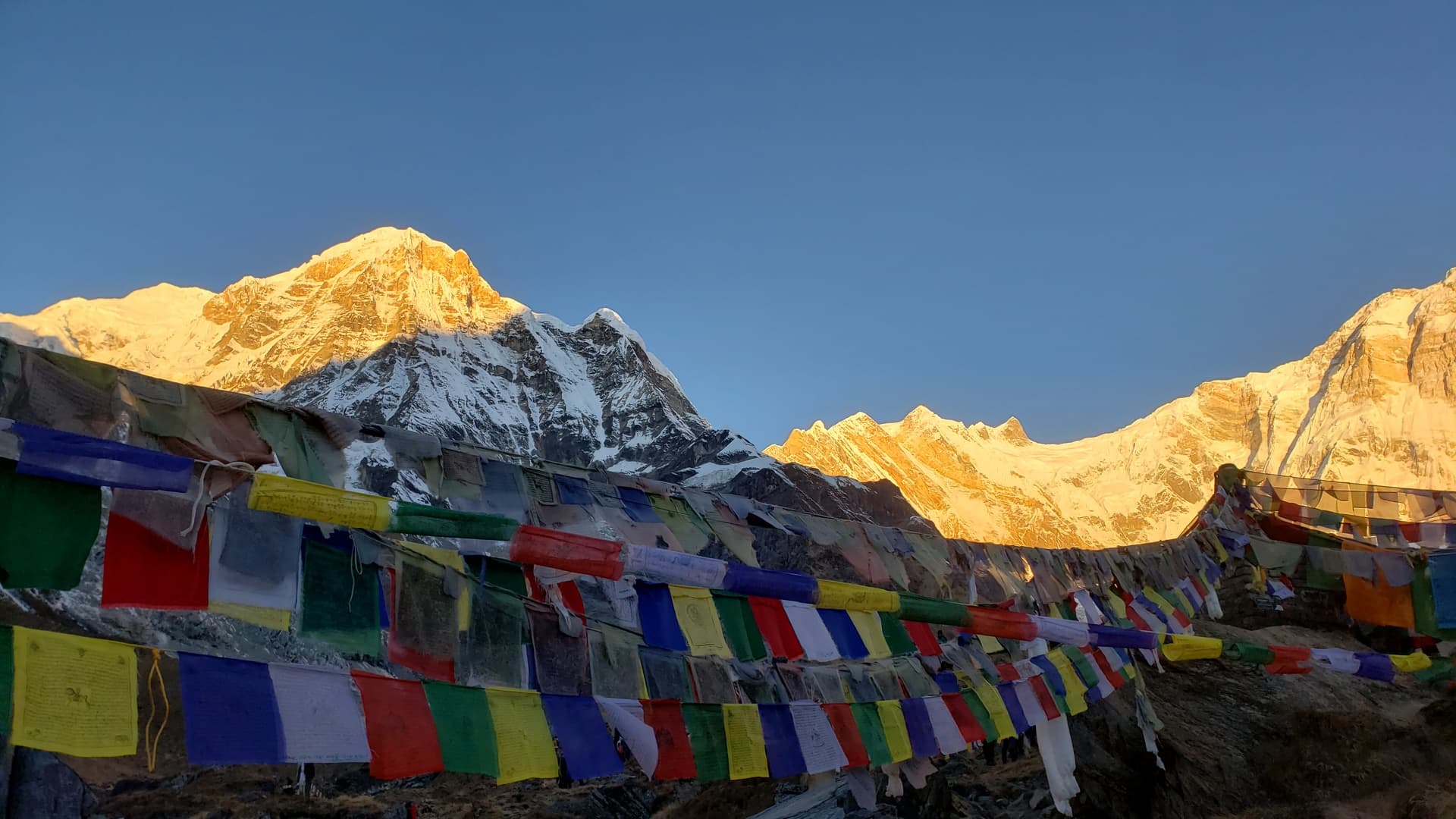“Sometimes I grow weary of the days, with all their fits and starts.
I want to climb some old gray mountain, slowly, taking
the rest of my lifetime to do it, resting often, sleeping
under the pines or, above them, on the unclothed rocks.”
-Mary Oliver

I’ve heard it said that if you can climb a flight of stairs, you can handle the Annapurna Base Camp Trek. On a recent assignment with Nepal Hiking Team, I had the opportunity to test the truth of this maxim for myself. It seemed promising enough: while the Annapurna Base Camp Trek (or ABC Trek) is one of Nepal’s most classic adventures, it doesn’t reach tremendous elevations or require any technical mountaineering skills. It’s all about simply putting one foot in front of the other while enjoying some of the most spectacular scenery in the entirety of the Himalayas. The trek took me just five days to complete, and my time on the trail brought me face-to-face with towering giants like Annapurna South, Annapurna I, and Machapuchare. But would I equate its difficulty to merely climbing a flight of stairs? Well, maybe not. It’s more like climbing a hundred flights of stairs—if those stairs were located in a vast amphitheatre of snowbound mountains where great food and friendly people were waiting every step of the way.
And speaking of friendly people, I know I’m in good hands with Nepal Hiking Team. My wife Krista and I traveled with the company a few years back, and we already know that they hire and train the best guides in the business. On this ABC Trek, we’re afforded both a dedicated guide and porter: Hari Gurung and Sangkhar Thapa, respectively. There’s been a lot of buzz in the trekking community over the past year about recent changes to the country’s mandatory guide requirements, with some independent trekkers bristling at the obligation to hire a local expert. For my part, I’m only too happy to enjoy the company of these capable and personable trekking professionals. Trekking in Nepal is an unforgettable experience that I’d recommend to just about anybody with the taste for high adventure—but your trek will only be as good as your guide.
Our guide certainly doesn’t disappoint. Hari Gurung hails from the Helambu region of Nepal: this is beautiful highland country full of rolling hills and terraced fields, quite close to the Kathmandu Valley and just approaching the wild frontier of the Langtang National Park. He's grown up in the shadow of the majestic Ganesh Himal mountains in the village of Golphu Bhanjyang. With nearly 40 years of experience in the trekking industry, he's paid his dues and worked his way up the proverbial career ladder: starting as a porter hauling heavy bags up steep mountains, graduating to the roles of kitchen assistant and chef, and finally securing the coveted position of a seasoned guide. And after just a few hours in his jovial company, I can tell he's going to be a character. He’s seen a lot of changes while trekking in Nepal over the past few decades, and he reminds us now and then of just how easy we have it. “Twenty years ago,” he says, “there were no guesthouses here. We had to sleep in caves!”

I suspect things have been rather different for our porter, one Sangkhar Thapa. He’s younger, for one thing, and he smiles with us when Hari recollects the older, harder days of the Annapurna Base Camp Trek. But Sangkhar is no newcomer to the trekking industry, either: he’s already qualified as an assistant guide when traveling with larger trekking groups. He’s filling in as a porter for us now because it’s a slow time of year, with fewer tourists demanding his business. He’s soft-spoken and kind, and his eyes light up when he tells us about his wife and four-year-old daughter back home in Kathmandu. But he’s also got a wicked side that reveals itself when a deck of cards appears at mealtimes—and then I know that I’m dealing with a fellow whose ambition is as sharp as his sense of humor. I have no doubt that he’ll be leading expeditions of his own in just a few short years.
So this is to be our trekking crew for the next five days, and the four of us have a lot of ground to cover: about 30 round-trip miles, or 50 kilometers. I should point out that this is something of an accelerated hiking itinerary. As road development cuts higher into the hills of the Annapurnas, trails like the ABC Trek have become more accessible for travelers with less time to spend in the mountains. But they do also create a cavalcade of trucks and buses plying narrow mountain roads, and the resultant dust storm can affect the trekking experience at lower elevations. With this in mind, Hari’s recommended that we start the trek just before Jhinu Danda. And the road to Jhinu is an adventure in its own right: while the steepest cliffs enjoy the protection of guardrails, there are nevertheless one or two switchbacks guaranteed to produce a rush of stomach-dropping vertigo and adrenaline. Fortunately, it’s a short drive: in just three or four hours, we find ourselves piling out of our Tata SUV and taking the first steps on the Annapurna Base Camp Trek.



Planning a Trip to Nepal? Make an Inquiry